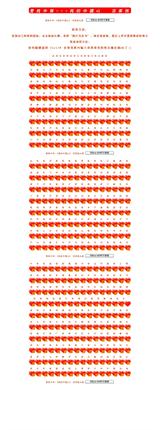English Help Network Mind Vineyard reprinted
This article is reprinted from English Help Website (www.english88.com) >
Reunion
[US] James Patterson, Bei Wa translated
My earliest memory of movies was those black-and-white images that flashed in Charlie Chaplin's films.
When I was a child, the nearby cinema often screened silent films. Every Saturday night, my parents, grandparents, and I would come here to watch Chaplin's "The Gold Rush." Since the theater owner liked this movie very much, it was frequently shown—even when advertisements for other films had already been posted. Therefore, I knew every detail of this movie by heart. Each time we saw him, it felt like the first time, and we often burst out laughing at his performances. Chaplin had a special talent.
His clothes were mismatched, his hat was broken, the cane in his hand was dejectedly bent, and he walked like a penguin. He was always in trouble but seemed to have a way out. He also composed music for his own films. In high school, I played two pieces he composed—"Smile" and "This Is My Song"—at a piano recital. My parents and grandparents also came there to experience the infectious power of Chaplin's music during my short musical career.
Many years later, both Chaplin and my family gradually left me. In 1975, Chaplin was knighted by the Queen of England, and he passed away in 1977. In 1981, a bronze statue of Chaplin was erected in Leicester Square in London, with an inscription on its base reading: "This comedic genius brought joy to many."
At the invitation of a friend, I went to London and wanted to see Chaplin in Leicester Square. However, Leicester Square was so big that it took me great effort to find the statue of the "tramp." With reverence, I stood quietly in front of the bronze statue for a few minutes, then took some photos. When I found an inviting bench around the statue, I decided to spend the morning with Chaplin.
Chaplin's right hand held his cane, while his left hand tightly clutched a bouquet of roses to his chest. This couldn't help but remind one of the 1931 film "City Lights" that he directed.
After sitting down, I saw a continuous stream of tourists walking past the statue of Chaplin. An elderly Canadian woman placed her granddaughter's plush toy on Chaplin's bronze elbow for a photo.
An Arab man also stopped. When I asked which of Chaplin's films he liked best, he said, "I think all of his films are good."
A group of Chinese people gathered in front of the statue and talked about the Chaplin films they remembered. I happily pressed the shutter and captured their images in the camera.
Two Frenchmen stopped to take commemorative photos. When I asked them which of Chaplin's films they liked best, they answered without hesitation: "The Gold Rush."
Several Dutch teenagers also paused, talking about Chaplin's performance in "The Great Dictator." They told me they had also seen some of Chaplin's short films.
An Italian family told me that "City Lights" was one of the greatest films ever made. They had collected quite a few of Chaplin's films in their home library.
As the morning passed, I took one last look at Chaplin. My mind was filled with images of my happy family. I remembered those Saturday nights when we sat together in the old cinema, watching Chaplin's funny moves in the movies, laughing uncontrollably again and again. When I learned that there were more people in the world who had shared similar experiences with me, it was truly a wonderful feeling. I came to London alone, but in fact, my family was also with me today in London. It was a warm and memorable moment. As I got up to leave, I looked back at Chaplin once again. You might say I'm silly, but I swear, he really smiled at me.
Many years have passed, yet he still possesses that special charm.




